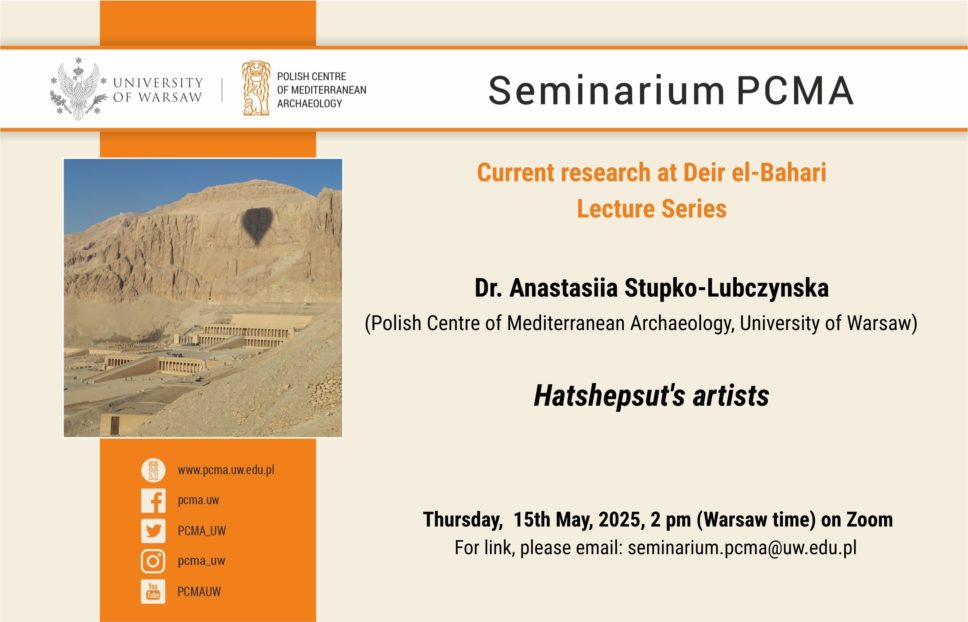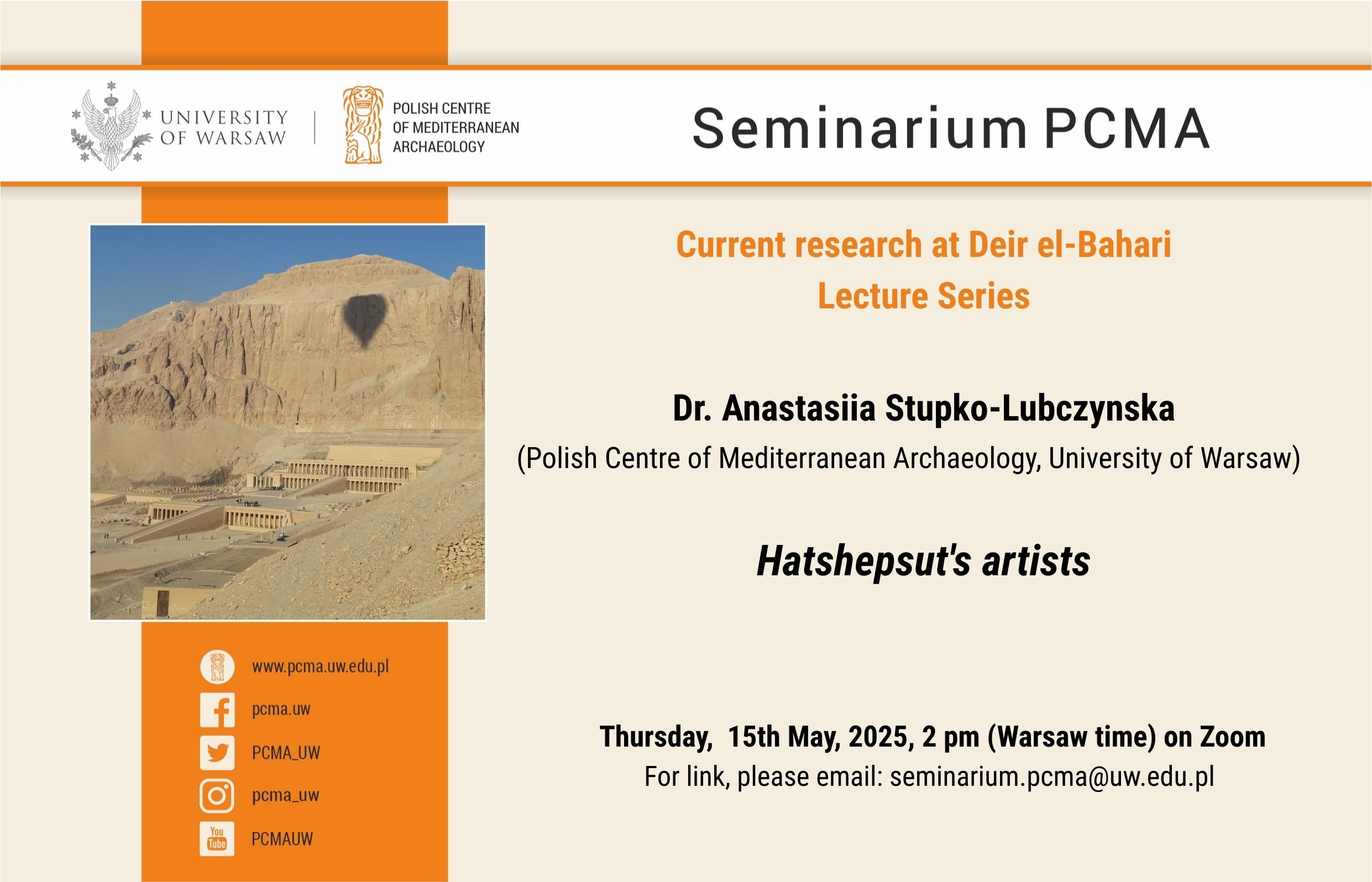Na kolejnym seminarium PCMA z serii „Current research at Deir el-Bahari” dr Anastasiia Stupko-Lubczynska (CAŚ UW) wygłosi wykład: „Hatshepsut’s artists”.
Abstrakt: „In Ancient Egypt, the authors are rarely connected to their works. However, the latest research demonstrates that the initial assumptions about the anonymity of Egyptian art as a whole are becoming obsolete; examples are becoming quite numerous, for instance, of private tombs that have their leading artists identified. Still, with large-scale projects, such as temples, this anonymity is often an effect of workshop settings and diversification of tasks imposed, again, by the scale. In other words, the authors dissolve in their collective endeavour.
Yet for Hatshepsut times (ca. 1500 BCE), there is an abundance of sources indicating the involvement of various people in the construction projects commissioned by the state. The focus of this talk will be on Hatshepsut’s mortuary temple at Deir el-Bahari, and on Hatshepsut’s courtiers supposed to be supervising the temple construction and designing its decoration. Evidence of their participation found within the temple, as well as in their monuments will be collated and examined, including newly discovered data within the temple interpreted as a “self-portrait in assistenza”. Against this background, a long-accepted and widely commented view of Senenmut being the chief architect of Hatshepsut’s monument in Deir el-Bahari will be revisited.”
Seminarium odbędzie się w czwartek 15 maja o godz. 14.00 na platformie Zoom. Cały cykl dostępny jest pod tym samym linkiem Zoom.
Aby otrzymać link, prosimy pisać na adres: seminarium.pcma@uw.edu.pl
Świątynia Hatszepsut w Deir el-Bahari jest uważana za jeden z najważniejszych zabytków starożytnej architektury egipskiej. Od 1961 roku świątynia jest przedmiotem badań i prac konserwatorskich polsko-egipskiej ekspedycji z Centrum Archeologii Śródziemnomorskiej Uniwersytetu Warszawskiego.
W ramach tego cyklu wykładów na Seminariach PCMA członkowie polsko-egipskiej ekspedycji zaprezentują wyniki najnowszych badań terenowych i studiów, koncentrując się na wykopaliskach archeologicznych, badaniach epigraficznych oraz pracach restauratorskich i konserwatorskich.
Organizatorem wydarzenia jest dr Patryk Chudzik z Zakładu Archeologii Egiptu CAŚ UW. Wykłady z tego cyklu obejmują tematy związane z najnowszymi badaniami Polsko-Egipskiej Ekspedycji Archeologiczno-Konserwatorskiej w Świątyni Hatszepsut w Deir el-Bahari.


